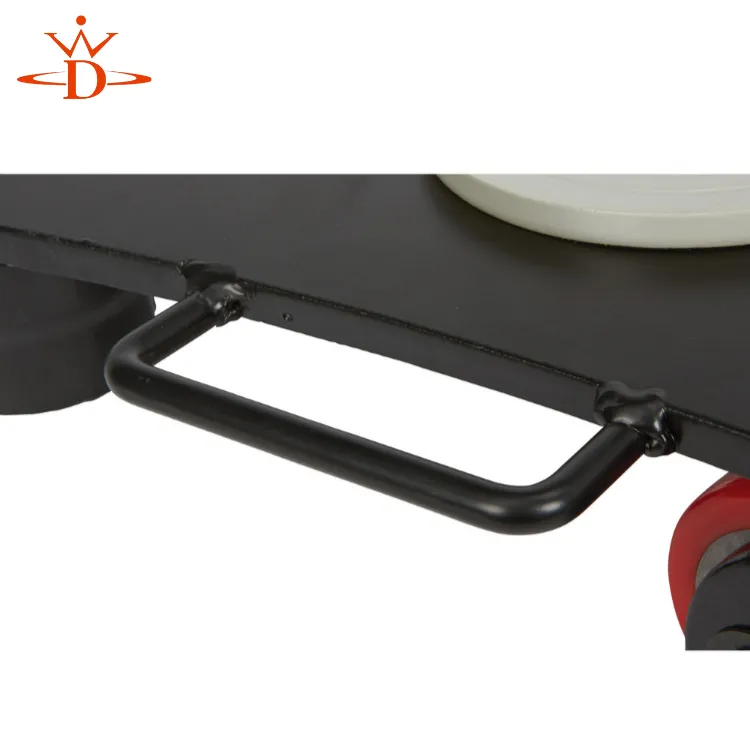rollers for moving heavy equipment
Using Rollers for Moving Heavy Equipment A Comprehensive Guide
In today’s industrial landscape, moving heavy equipment from one location to another is a common challenge faced by construction companies, warehouses, and many other businesses. Traditional methods of manual labor can be not only inefficient but also dangerous. This is where rollers for moving heavy equipment come into play. These elegant solutions allow for the safe and effective transportation of large machinery and items, increasing productivity while minimizing risks.
Understanding Rollers
Rollers, often referred to as industrial dollies or moving skates, are devices designed to facilitate the movement of heavy items. Typically made from strong materials such as steel or durable plastics, these rollers can bear significant weight and provide a stable platform for equipment during transport. They come in various sizes and configurations depending on the specific requirements of the task at hand.
The basic principle behind rollers is to reduce friction between the heavy equipment and the ground, allowing for smoother and easier movement. Many modern rollers are equipped with ball bearings that enhance their performance, enabling them to glide seamlessly across different surfaces.
Types of Rollers
1. Roller Dollies These are flat platforms with multiple wheels underneath that can support heavy machinery. They are ideal for moving equipment sideways or across flat surfaces.
2. Hydraulic Rollers These rollers incorporate hydraulic systems to lift heavy loads off the ground, allowing for easier mobility. They are particularly useful in situations where loads need to be raised for transport.
3. Skids and Trolleys These are specialized rollers designed for specific types of equipment. Skids are often used for heavy items that need to be slid rather than wheeled, and trolleys are designed for a range of movements, including vertical.
4. Pneumatic Rollers Equipped with inflatable tires, these rollers are designed for rough terrain. They can easily navigate uneven surfaces while providing stability and support.
Benefits of Using Rollers
The use of rollers for moving heavy equipment comes with numerous advantages
- Safety Rollers significantly minimize the risk of injury associated with lifting and moving heavy objects manually. Utilizing rollers instead of brute force reduces the chances of accidents and strains on the body.
rollers for moving heavy equipment

- Efficiency Time is money in any industry. Rollers allow for quicker relocation of heavy equipment, enabling workers to focus on other important tasks rather than laborious moving processes.
- Flexibility Rollers can be used in various environments, from factories to construction sites, and for an array of heavy items. This versatility makes them an invaluable asset for businesses that handle diverse machinery.
- Cost-Effectiveness Although there is an initial investment in purchasing rollers, the cost savings in terms of reduced labor hours and lower injury rates can lead to significant financial benefits over time.
Best Practices for Using Rollers
To ensure the safe and efficient use of rollers, consider the following best practices
1. Proper Training Ensure that all personnel involved in moving equipment using rollers are adequately trained. They should understand how to properly load and unload items onto rollers to prevent accidents.
2. Weight Limit Awareness Each roller has a specified weight capacity. It is crucial to remain within those limits to prevent equipment failure and ensure safety.
3. Regular Maintenance Regular checks should be performed to ensure that rollers are in good working condition. Look for any signs of wear or damage, particularly in the wheels and bearings.
4. Clear Pathways Always ensure that the path for moving heavy equipment is clear of obstacles. This reduces the risk of accidents and makes the movement process smoother.
5. Use Additional Equipment In certain situations, combining rollers with other lifting or transport equipment, such as forklifts or cranes, may enhance efficiency and safety.
Conclusion
In summary, rollers for moving heavy equipment are a vital component of modern industrial practices. Their ability to increase safety and efficiency while reducing labor costs makes them indispensable in various settings. By understanding their types, benefits, and best practices, companies can make informed decisions that will streamline their operations and protect their workforce. With the right approach, the effective use of rollers can transform the way heavy equipment is moved, paving the way for enhanced productivity and operational excellence.
-
Portable 2000 lb Gantry Crane | Heavy-Duty & AdjustableNewsAug.30,2025
-
Versatile Lifting Solutions with Gantry and Overhead CranesNewsAug.29,2025
-
The Versatile Mobile Gantry Crane SolutionNewsAug.29,2025
-
Reliable Movement with Heavy Machinery Skates and RollersNewsAug.29,2025
-
Reliable Lifting Performance with 2000 lb Gantry Crane and 2 Ton Overhead SystemsNewsAug.29,2025
-
Maximize Lifting Efficiency with PML Magnetic LiftersNewsAug.29,2025
-
Efficient Relocation Starts with Reliable Machinery MoversNewsAug.29,2025
